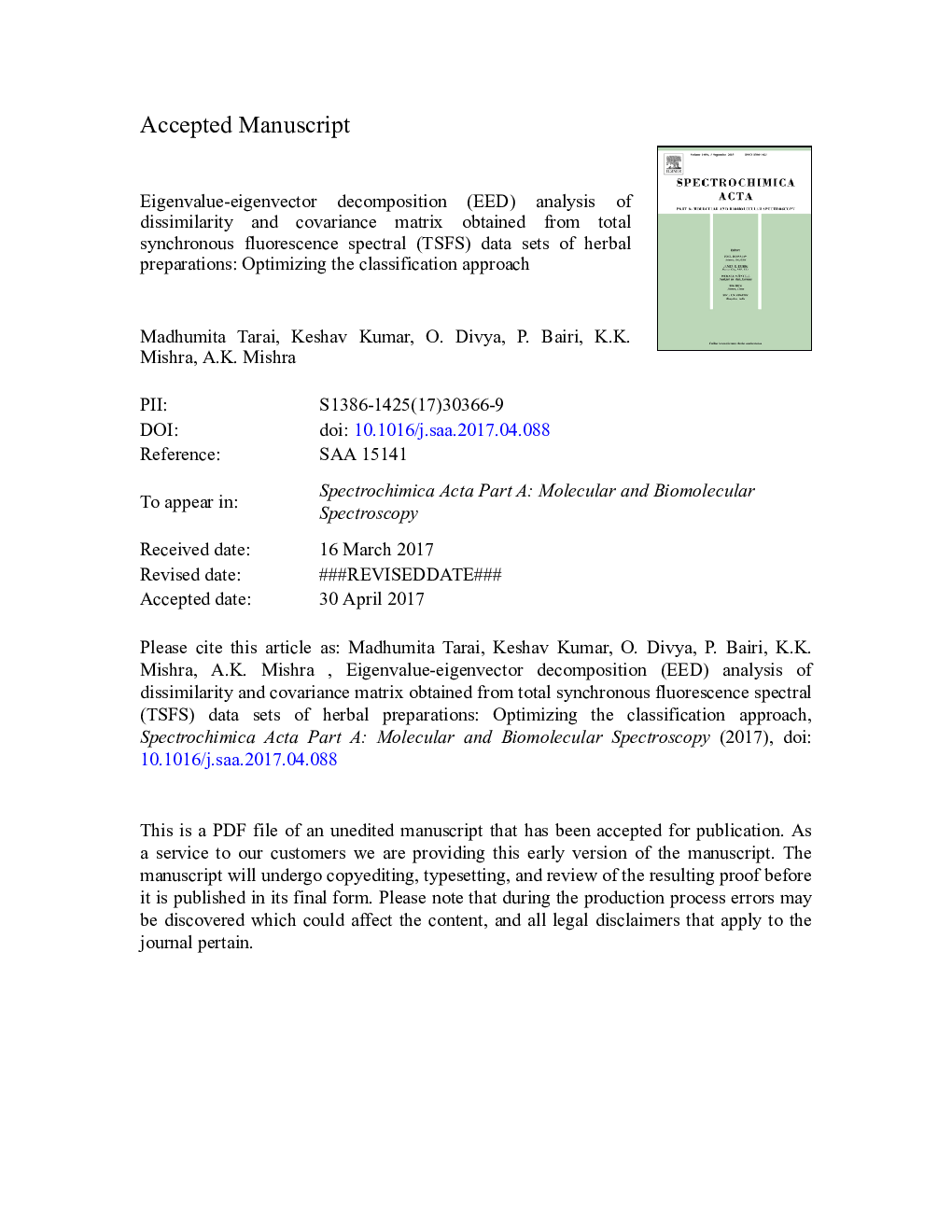| Article ID | Journal | Published Year | Pages | File Type |
|---|---|---|---|---|
| 5139661 | Spectrochimica Acta Part A: Molecular and Biomolecular Spectroscopy | 2017 | 20 Pages |
Abstract
The present work compares the dissimilarity and covariance based unsupervised chemometric classification approaches by taking the total synchronous fluorescence spectroscopy data sets acquired for the cumin and non-cumin based herbal preparations. The conventional decomposition method involves eigenvalue-eigenvector analysis of the covariance of the data set and finds the factors that can explain the overall major sources of variation present in the data set. The conventional approach does this irrespective of the fact that the samples belong to intrinsically different groups and hence leads to poor class separation. The present work shows that classification of such samples can be optimized by performing the eigenvalue-eigenvector decomposition on the pair-wise dissimilarity matrix.
Related Topics
Physical Sciences and Engineering
Chemistry
Analytical Chemistry
Authors
Madhumita Tarai, Keshav Kumar, O. Divya, Partha Bairi, Kishor Kumar Mishra, Ashok Kumar Mishra,
